A popular Japanese outdoor pastime offers participants the chance to get well and truly off the beaten track, writes Robert Cameron.
It’s summer – time to hit the streams for some sawanobori.
This popular and uniquely Japanese sport, sometimes translated as stream-climbing or river-tracing, is virtually unknown outside of Japan, but is extremely popular here. Almost every mountaineering and adventure club in the country has a sawa group, and whole shelves of books (in Japanese) on the subject can be found at any outdoor store. Japanese sports equipment manufacturers make a tidy sum supplying specialized gear.
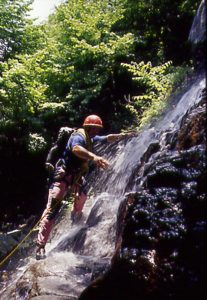 Of course, elsewhere in the world people frolic in streams, but sawanobori is not like for instance canyoning, a sport popular in Europe and the United States, in which you work your way down the river. In sawanobori, the idea is to climb up the stream, in as elegant, direct and enjoyable a way as possible.
Of course, elsewhere in the world people frolic in streams, but sawanobori is not like for instance canyoning, a sport popular in Europe and the United States, in which you work your way down the river. In sawanobori, the idea is to climb up the stream, in as elegant, direct and enjoyable a way as possible.
There are good reasons for both sawanobori’s popularity in Japan and the fact that it’s done almost nowhere else. One is the physical nature of Japan’s rivers, which, cascading down long, gentle volcanic slopes, in general have an incline and a character that lend themselves to this kind of climbing. In Europe, for example, the slopes are much steeper and most of the streams are too dangerous to climb safely.
Sawanobori has been done since ancient times in Japan and started, as many sports do, from a practical need. Japan’s mountainsides were, then as now, choked with kumasasa, a type of low bamboo shrub that grows so thick that it renders most mountainsides impassable, even on foot. The stuff grows fast and thick, quickly closing off any trails or open spaces, so in many mountain areas stream climbing was the only way to travel cross-country. Travelers could survive by eating sansai (wild mountain vegetables) growing on the stream banks and the fish in the streams.
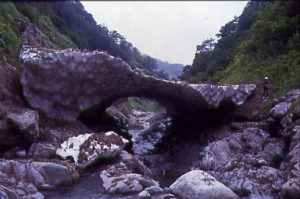 Nowadays, beauty and freedom are a big part of the appeal. Paldovar Cveto, a Slovenian and the first foreigner ever to earn a mountain guide’s licence in Japan, teaches sawanobori at the outdoor school in Tokyo that he operates with his wife, Chibow.
Nowadays, beauty and freedom are a big part of the appeal. Paldovar Cveto, a Slovenian and the first foreigner ever to earn a mountain guide’s licence in Japan, teaches sawanobori at the outdoor school in Tokyo that he operates with his wife, Chibow.
“The best thing about sawa is that there are no rules,” Cveto says, “You cook where you want, you camp where you want, you swim where you want; there’s nobody around checking up on you to make sure you separate your gomi.”
And it never gets crowded on the sawa, he notes. “It’s a very popular sport, with thousands of people doing it, but there are so many routes – thousands and thousands of little sawa feeding into the bigger streams – that even near Tokyo, you rarely see other people, even in the most popular places.” Only the most heavily traveled routes will see more than two or three parties a year, and there are usually few signs of humanity.
The gear is pretty simple. Much of it is like equipment for river fishing – a rubberized pack with webbing in the bottom to let the water out, and air balloons or inflated gomi bags for buoyancy when the going gets deep. Climbers also use special sawa footwear, dedicated rubber shoes with felt soles for traction on slippery rocks, updates of the original waraji, or straw sandals (which some people still use). Serious sawa climbers carry a stiff-soled pair for vertical rock and softer ones for wading and horizontal work, as well as “moss chains,” strap-on crampon-like gadgets that provide extra traction on slick boulders. Kneepads are a must, as are shin pads and gaiters. A good selection of rock-climbing equipment – including ropes, a hammer and pitons – is needed for upper grades. A helmet is a wise addition, and swimming goggles come in handy when attempting sections that push climbers out of their depth. Many climbers wear wetsuits and fishing gloves.
The routes come in an endless variety and are graded according to technical difficulty, from one (like a wading pool) to five (technical rock climbing with ropes and pitons). The most popular and pleasant routes are about grade three, which is “hard enough to keep it interesting, but not so hard that you get exhausted or killed,” Cveto says. The guidebooks also give each route one to five stars, depending on the amount of strength you need to complete it. So a route can be grade one with five stars, so it’s technically easy but a very long, multi-day trip.
Sawanobori is a multi-disciplinary sport, requiring a variety of climbing, swimming, orienteering and camping skills. A sawanobori climb might include a section of gorges to walk or swim through or, if they’re really deep, to traverse along the walls. Most have a section of nametaki (flowing water), an easy and pleasant type, which mostly consists of wading in shallow water over pebbly streambeds. Some include slab climbing, in which the stream washes down a gently sloping section of big flat rock; the climber walks up it flat-footed, trying to grip nubbins in the rock with his or her shoes. Waterfalls can be difficult and dangerous (as well as wet) to climb, and the pools at the bottom can harbour some nasty undertows. They often require ropes anchored to trees or pitons.
Naturally, there are dangers. Along with the usual mountaineering hazards of weather, falling rock, falling off and hypothermia, sawanobori has a few of its own. It’s easy to slip on the rocks with a heavy pack and get injured. Common injuries include sprained ankles, fractured patellas (knee caps, hence the knee pads) and barked shins.
By far the biggest danger is teppomizu, or flash floods, not only because they can crush you under a massive wall of water, mud and debris, but also because they can come out of the blue, in fine weather, with no warning or apparent cause. Sparked by rainfall miles away (and sometimes even days before), teppomizu are caused by runoff washing into a stream and getting backed up behind a dam of branches and debris, which suddenly lets go, sending tons of debris barreling down the stream, destroying everything in its path.
Cveto has had plenty of experience with teppomizu. He recalls one day he was climbing a stream in the Northern Alps with a group of novice students when suddenly the water started to rise. Despite the beautiful sunny weather, he recognized the signs of an impending teppomizu and hustled the students down to their camp. Ten minutes later, the water had risen a full meter. “The last crossing, back to the camp, we had to rig ropes, the water was so deep and fast,” he recounts. “Just an hour before, we’d crossed it just by walking on the rocks.”
 The stream kept rising and the water raged so powerfully that boulders trundling at the bottom of the stream were throwing off sparks, the flashes clearly visible from the streambank. “We were lucky to get across when we did,” he says. “Another half hour and we would have been stuck on the mountain for a couple of days.”
The stream kept rising and the water raged so powerfully that boulders trundling at the bottom of the stream were throwing off sparks, the flashes clearly visible from the streambank. “We were lucky to get across when we did,” he says. “Another half hour and we would have been stuck on the mountain for a couple of days.”
Another big danger is snow bridges. Some remain intact through many summers in high alpine areas and over the years turn to ice. They’re handy for traversing gorges and they’re fun to walk over and under, but they sometimes collapse without warning, squashing and suffocating anyone unlucky enough to be caught underneath. People are killed regularly this way. Four photographers died last year when they went under one to take pictures and it collapsed on them.
The dangers are manageable, though. You have to keep a weather eye open while climbing and take the dangers into account when you pitch your tent at night. The best way to stay safe is information – learn from experienced people (or a professional guide like Cveto), talk to people, take a guidebook and read it carefully, keep an eye on the weather and, above all, don’t be stupid.
Sawanobori is done all over Japan and there are thousands of routes, from Hokkaido to Kyushu. In northern and high alpine areas, the season is quite short, just a few weeks in summer, in July and August, shoehorned in between the late snowmelt and typhoon season. Lower down, and further south, it is done almost year round. Near Tokyo the season is from March to November. Cveto especially enjoys autumn sawa, after typhoon season is over and the weather stabilizes. “It gets pretty cold, so we don’t do a lot of swimming routes, but it’s incredibly beautiful, with the leaves changing color,” he says.
Kurobegawa, in the Northern Alps on the border of Toyama and Nagano prefectures, is one of the most famous sawa climbs – the El Capitan or Eiger Nordwand of sawanobori. The four- or five-day trip is on every serious sawanobori aficionado’s agenda. It’s a popular route and is doable only a few weeks a year. It requires skill, and a certain amount of self-sufficiency as the walls are high and the hillsides around it are impassable. “There’s no escape,” notes Cveto when asked about the Mecca of Japan’s sawanobori community. “Once you start, you’re committed.” But it’s a beautiful climb and has a variety of challenging routes on it, so climbers flock to it.
In the Tokyo area, Tanzawa, in Kanagawa prefecture, and Okutama are popular destinations, with lots of 400-700 meter climbs that can be done as day trips. Sawanobori is starting to get some attention overseas, mostly as a result of Japanese climbers pushing up new routes, especially in Taiwan and southern China, where the streams are especially well-suited to climbing.
Cveto is enthusiastic about this relaxed, refreshingly non-competitive sport. “It’s a charming pastime,” he says. “Especially on multi-day trips, you climb up waterfalls, traverse gorges and splash around in mountain streams, then at night you camp by the stream, go fishing, pick some sansai, cook them up with some ramen … it’s sweet.”
For more information about guided sawanobori expeditions in Japan, contact Cveto Podlogar at C & C Japan Co, tel: 03-3916-6801, web: www.candcjp.com
Story by Robert Cameron
From J SELECT Magazine, June 2006

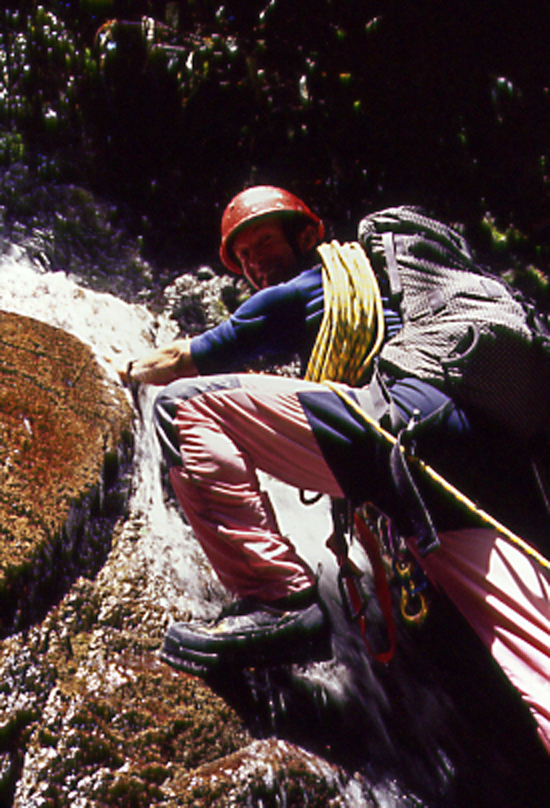


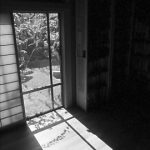
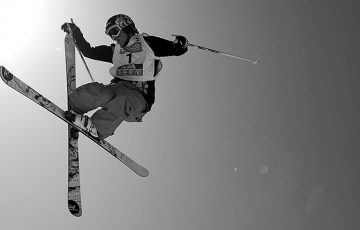
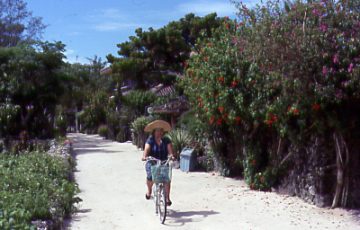
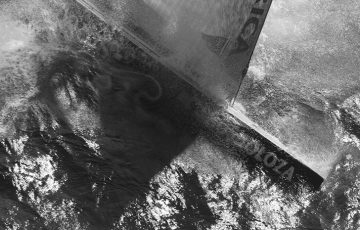
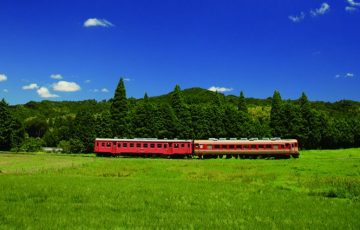


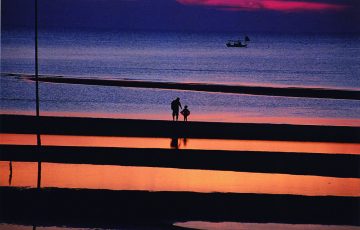



Recent Comments